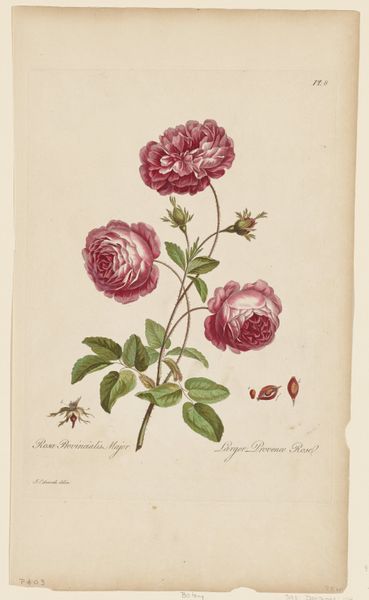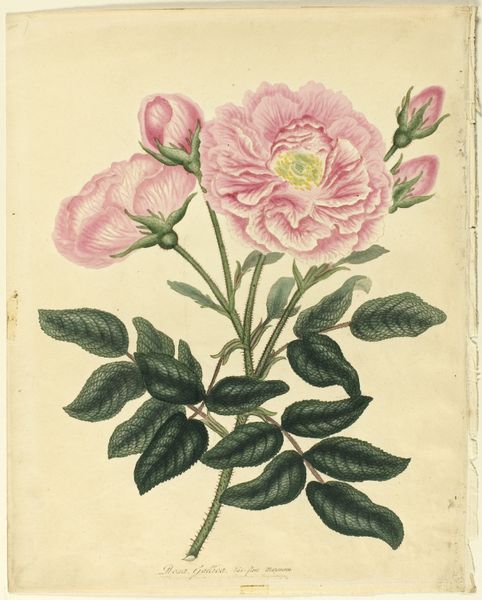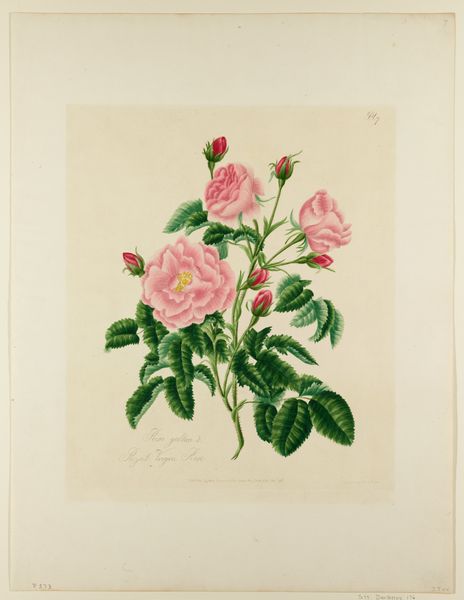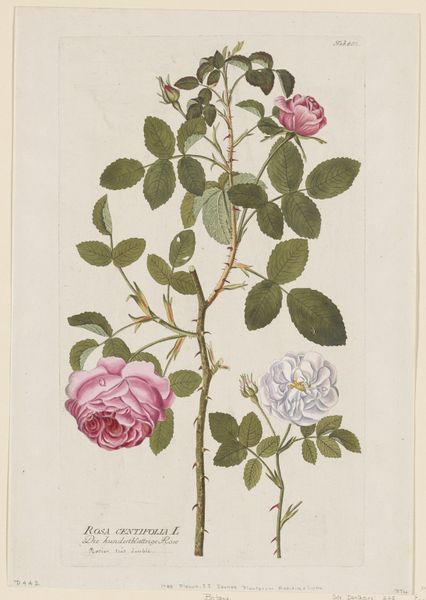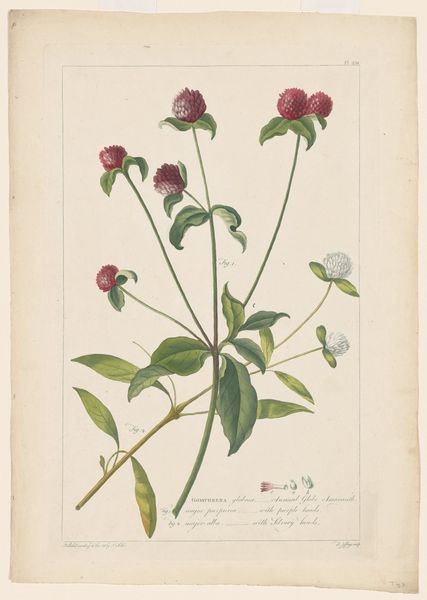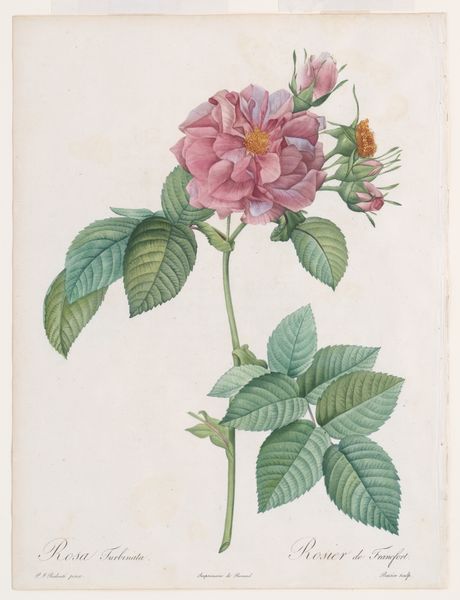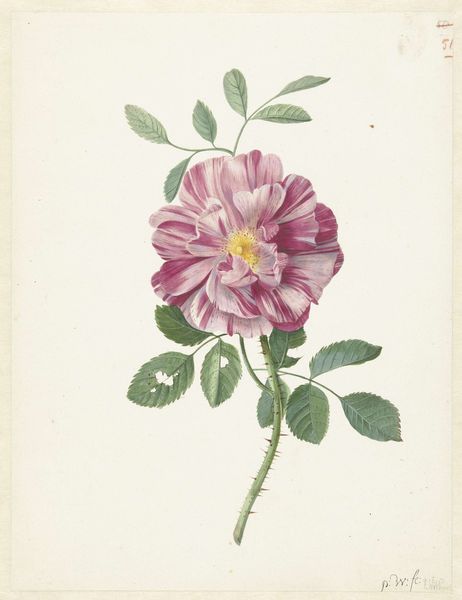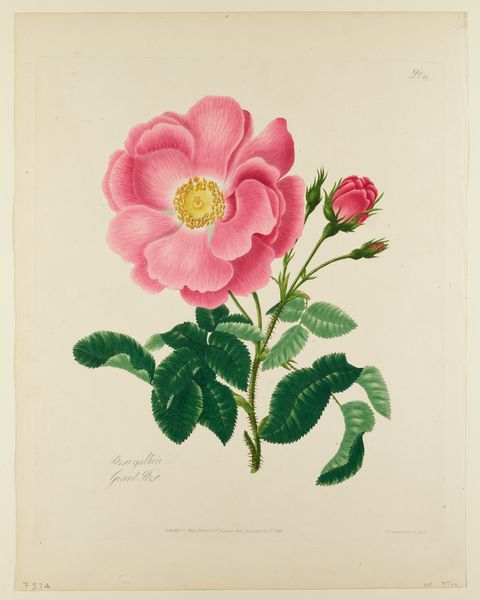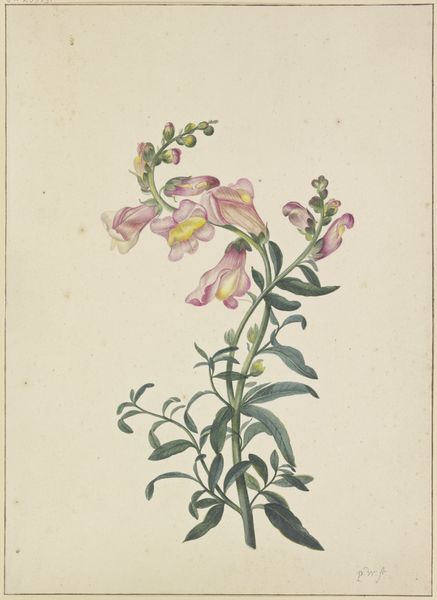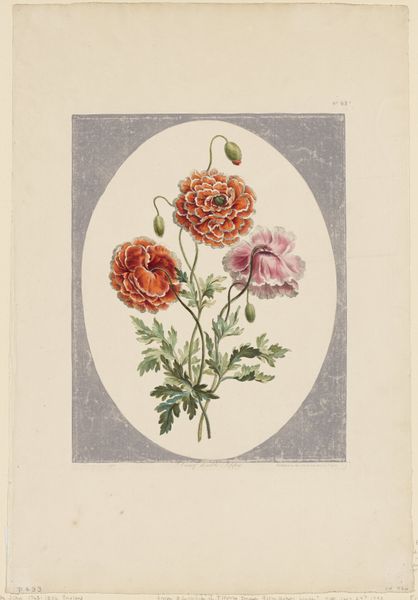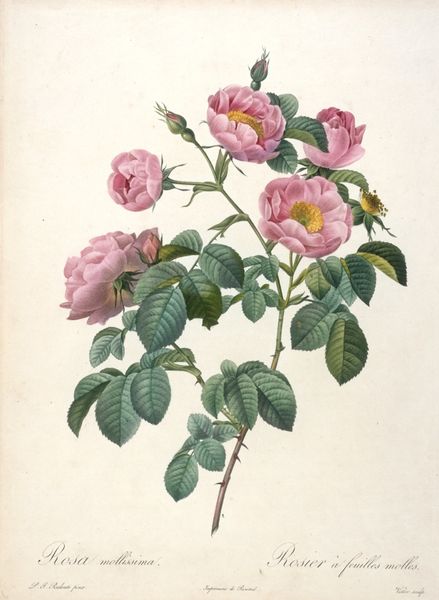
print, etching, engraving
# print
#
etching
#
food illustration
#
botanical drawing
#
engraving
#
botanical art
#
watercolor
Dimensions: 13 3/4 x 9 3/4 in. (34.93 x 24.77 cm) (plate)
Copyright: Public Domain
This botanical print, Rosa rubra plena Spinosissima, was made by John Edwards in the late 18th century. It’s an engraving, meaning that the image was incised into a metal plate, inked, and then printed onto paper. Engraving is a precise, labor-intensive process. The lines that define the rose’s form, its velvety petals and thorny stem, were all cut by hand. Look closely, and you can see how the varying thickness and density of the lines create a sense of volume and texture. The addition of color, likely applied by hand as well, further enhances the realism of the image. While seemingly worlds away from the concerns of labor and industrial production, images like this one were deeply entwined with colonial networks and the commodification of nature. Edwards’ print is a reminder that even the most seemingly delicate and beautiful objects can be born of complex social and economic forces. We can appreciate this print not just for its aesthetic qualities, but also for what it tells us about the history of science, commerce, and artistic skill.
Comments
No comments
Be the first to comment and join the conversation on the ultimate creative platform.
